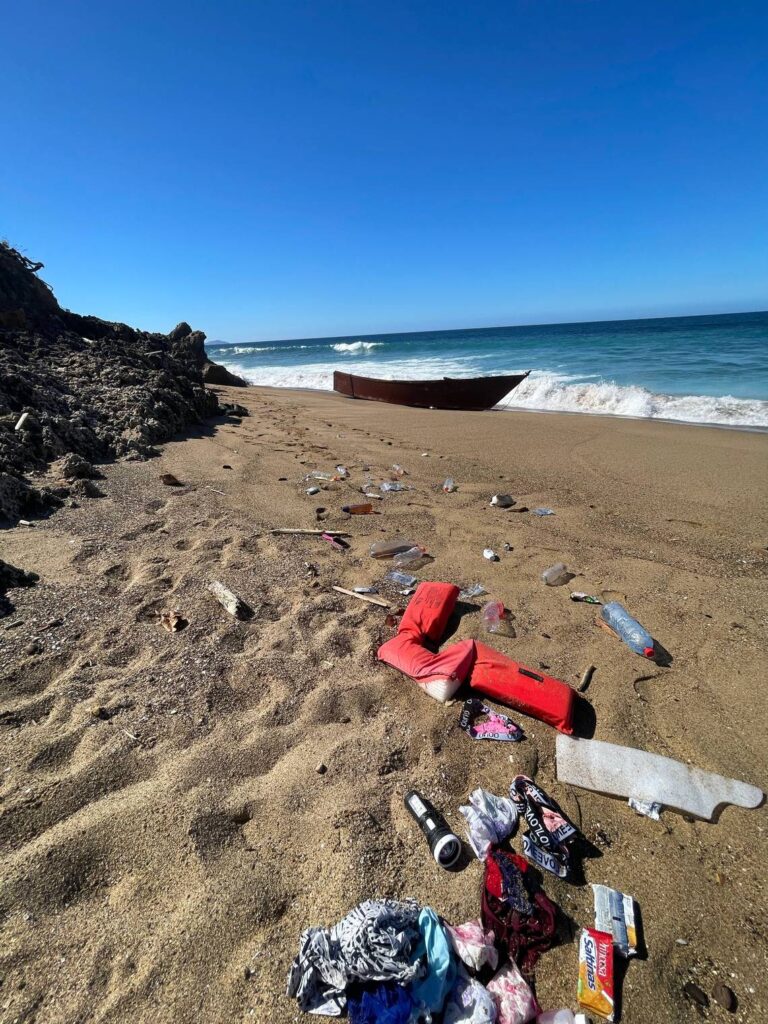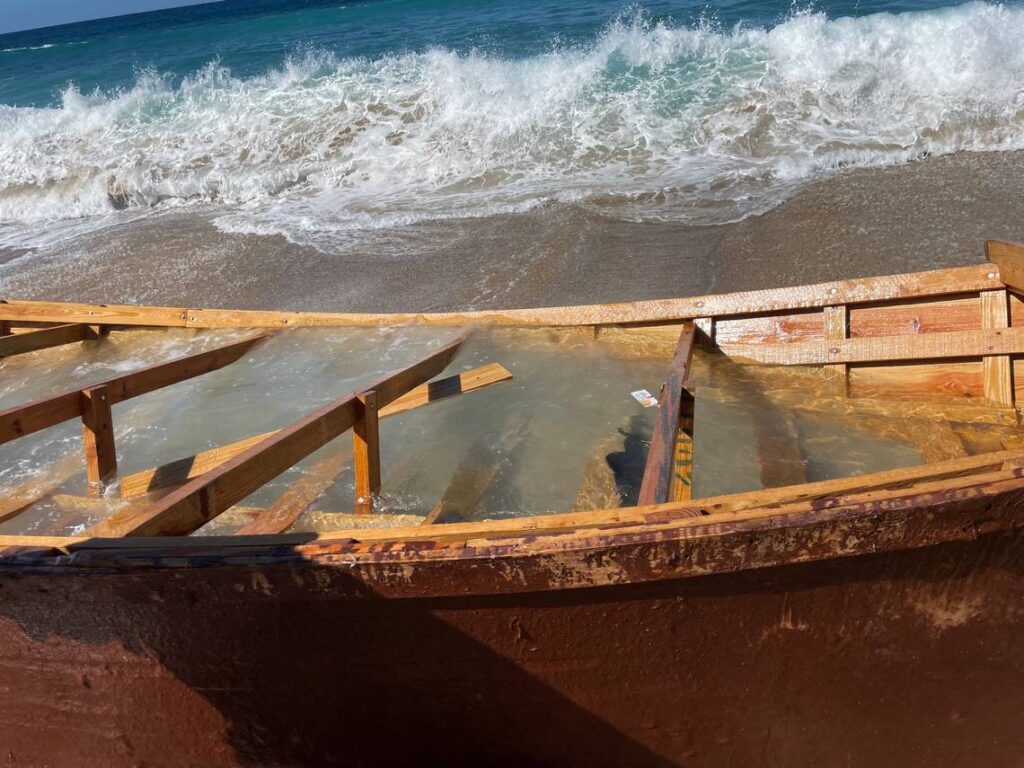SAN JUAN — John Parry was at his rental home in the Puerto Rican coastal town of Rincón on Monday afternoon when he spotted dozens of people, wet and coming toward his driveway. As the group walked up the steep hill up from a nearby beach, he called over his wife, Laura Goldman, to come see.
Leaning over her railing, Goldman made eye contact with one of the men and asked, “‘English or español?”
“He said, ‘English,’ ” said Goldman, who followed up with, “Where are you coming from?”
The man yelled, “Haiti.”

The shocking scene in a community known for its world-famous surfing and expatriate community caught the couple from Northern California and Rincón residents and tourists by surprise. But it is part of a growing surge in landings by migrants from Cuba and Haiti that has shorelines in the U.S. territory and Florida increasingly littered with boats, and officials increasingly worried about tragedies at sea.
The rise in migration by sea is coinciding with increased political and economic instability in the two Caribbean countries. As a result, people are sailing on makeshift and private vessels or hiring human smugglers to get them to the U.S. coastlines, say immigration officials, who are growing increasingly concerned as more undocumented migrants risk dangerous sea voyages on fragile boats.
Days ago, a 25-foot boat with 40 people crossing from the Bahamas capsized off Fort Pierce. The U.S. Coast Guard said it had found one body and one survivor floating in the waters off Florida’s east coast. The man, whose identity and nationality has not been released, told the Coast Guard that he and the group left Bimini Saturday, and their boat overturned in rough weather soon after they departed.
The day before the boat capsized, the Coast Guard reported that it had intercepted 88 Haitians near the Bahamas and returned them to Haiti. Another 191 Haitians aboard an overloaded sailboat were intercepted on Tuesday some 40 miles southwest of Great Inagua in the southern Bahamas.
The commander of Coast Guard Sector Miami, Capt. Jo-Ann Burdian, told reporters Wednesday at a press briefing in Miami Beach about the missing boaters. She said that while she understands people’s desire to leave the economic and political instability of their homelands, taking to the sea is dangerous.
“The decision to take to the sea is a complicated one,” Burdian said. “Certainly, as we saw in this case, the waters in the northern Florida Straits can be quite treacherous.”
Since October 1, the U.S. Coast Guard says it has stopped 802 Haitians at sea attempting to get to the U.S. The tally is on track to surpass last fiscal year’s number, which was 1,527 Haitians. That number also was a significant increase compared to the 418 the previous year.
While Haitian migration is on track to exceed that of recent years, so too is Cuban migration. Last fiscal year, 838 Cubans were intercepted at sea by Coast Guard crews, compared to 49 in the previous year. So far this fiscal year, which began October 1, 557 Cubans have been stopped at sea trying to get to Florida.
South Florida, in particular the Key Largo area of the Upper Florida Keys, has become a favorite landing spot, with several large groups of Haitian migrants arriving since November. The arrivals were a group of 63 people on November 18; a group of 52 people on December 24; and another 176 people packed on the deck of a 60-foot sailboat on January 9.
Traffickers are attempting to drop migrants off in Puerto Rico, where boats are increasingly risking the treacherous voyage directly from Haiti through the Mona Passage, or making the trip from the Dominican Republic.
Read more at: https://www.miamiherald.com/news/local/immigration/article257742443.html#storylink=cpy



